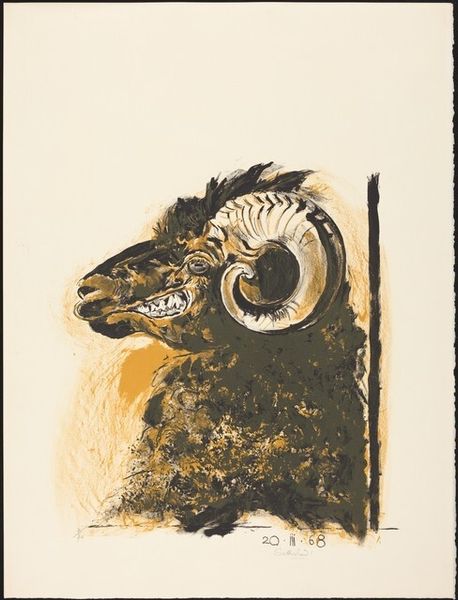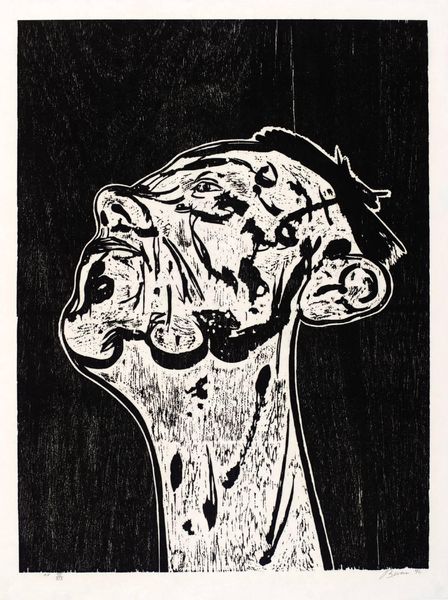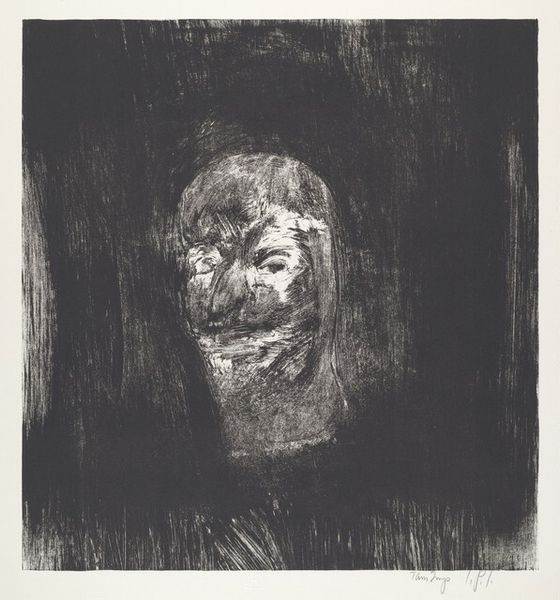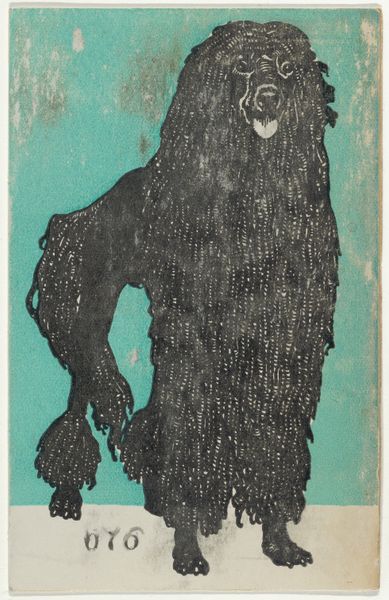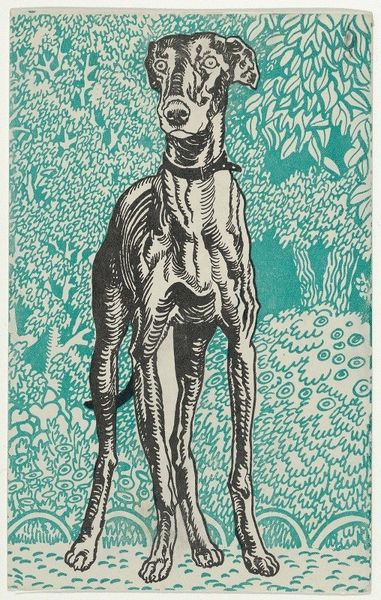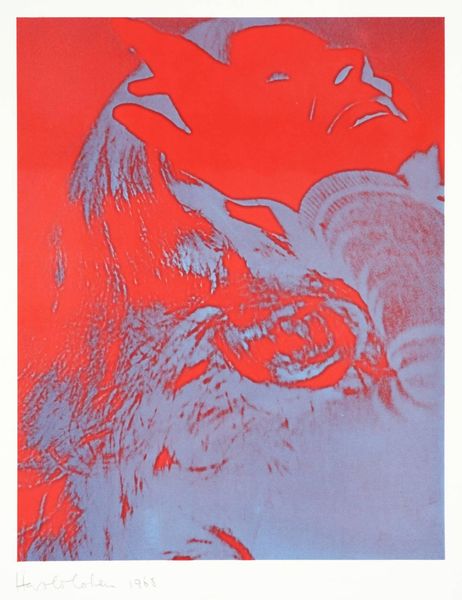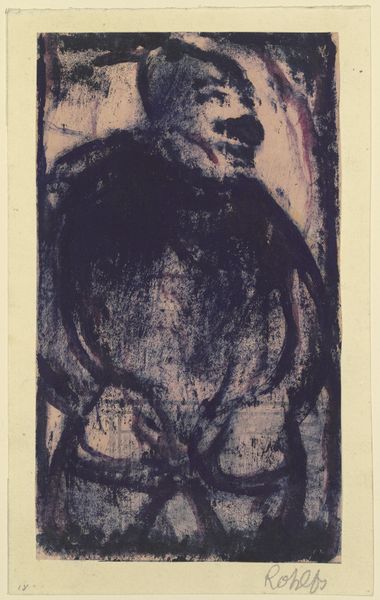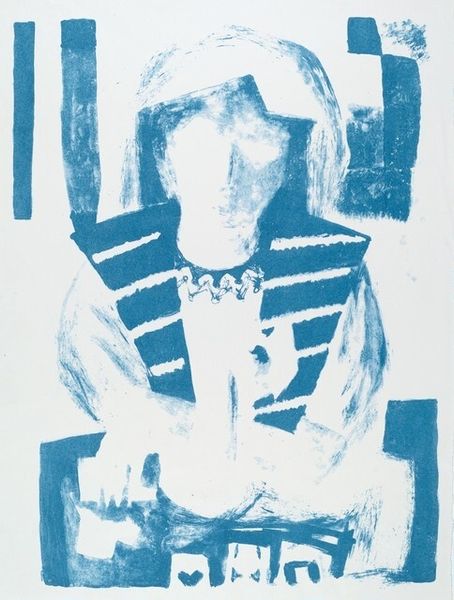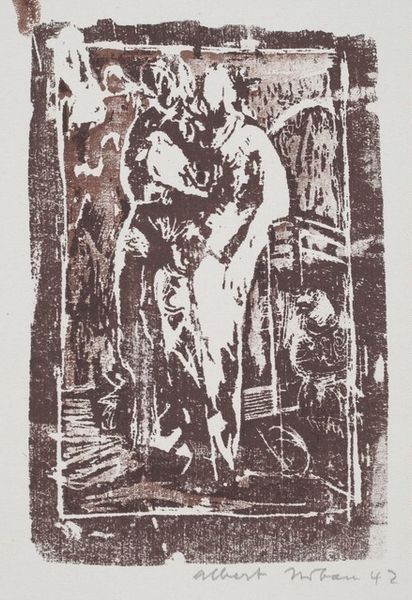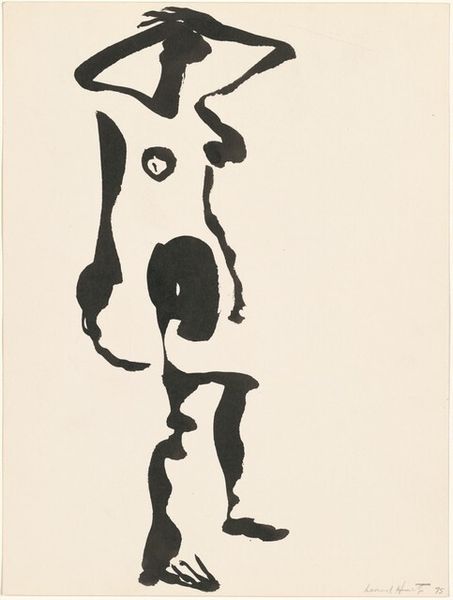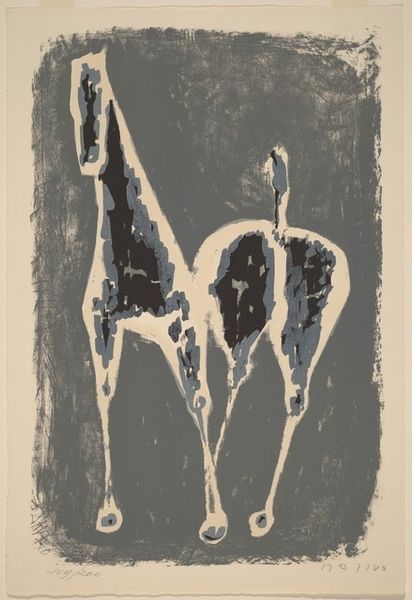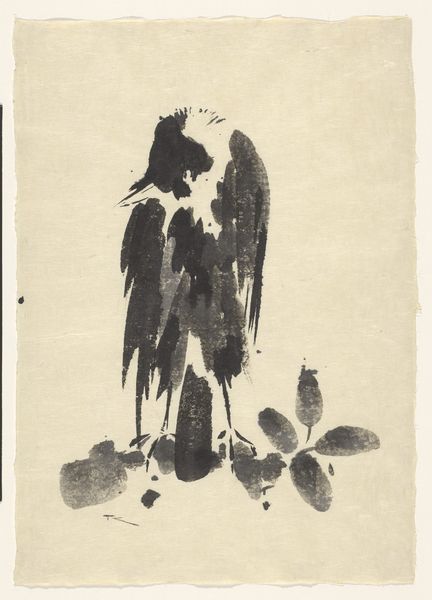
graphic-art, print
#
graphic-art
# print
#
figuration
#
abstraction
#
modernism
Dimensions: sheet: 65.7 x 49.5 cm (25 7/8 x 19 1/2 in.)
Copyright: National Gallery of Art: CC0 1.0
Editor: Here we have Graham Sutherland’s 1968 print, "Bird Form (full face)." It feels both ancient and modern at the same time. What cultural resonances do you see in this piece? Curator: The bird, especially the owl, has always been a powerful symbol. In ancient Greece, it was associated with Athena, the goddess of wisdom. This bird, with its staring eyes and almost ceremonial platform, evokes a kind of archaic monument. Do you sense that too? Editor: Yes, I do. The way it’s presented, almost like a deity. It’s raised on a plinth. Is the stark abstraction typical for Sutherland? Curator: In a way, yes. While Sutherland is known for his landscapes, particularly his semi-abstract thorn bushes, he consistently explores natural forms, stripping them back to their essential shapes and symbolic weight. This “Bird Form” echoes similar totemic figures throughout art history. Think about ancient Egyptian art, or even indigenous carvings. Can you see connections? Editor: Absolutely. It does bring to mind some kind of tribal carving. The bold lines and the limited use of color also add to that feeling. Is there a feeling of primitivism here? Curator: Perhaps. The rawness of the printmaking technique, the unblended ink, creates a sense of immediacy. We can sense the artist's hand, but it's more than primitivism. It’s an exploration of universal symbols – the enduring power that certain images hold in our collective memory. Editor: It's fascinating how Sutherland uses a seemingly simple image to tap into such deep and resonant themes. I hadn't thought about the bird as a symbol with such historical weight. Curator: And how modern abstraction allows those ancient associations to resurface, stripped of context yet powerfully present.
Comments
No comments
Be the first to comment and join the conversation on the ultimate creative platform.
